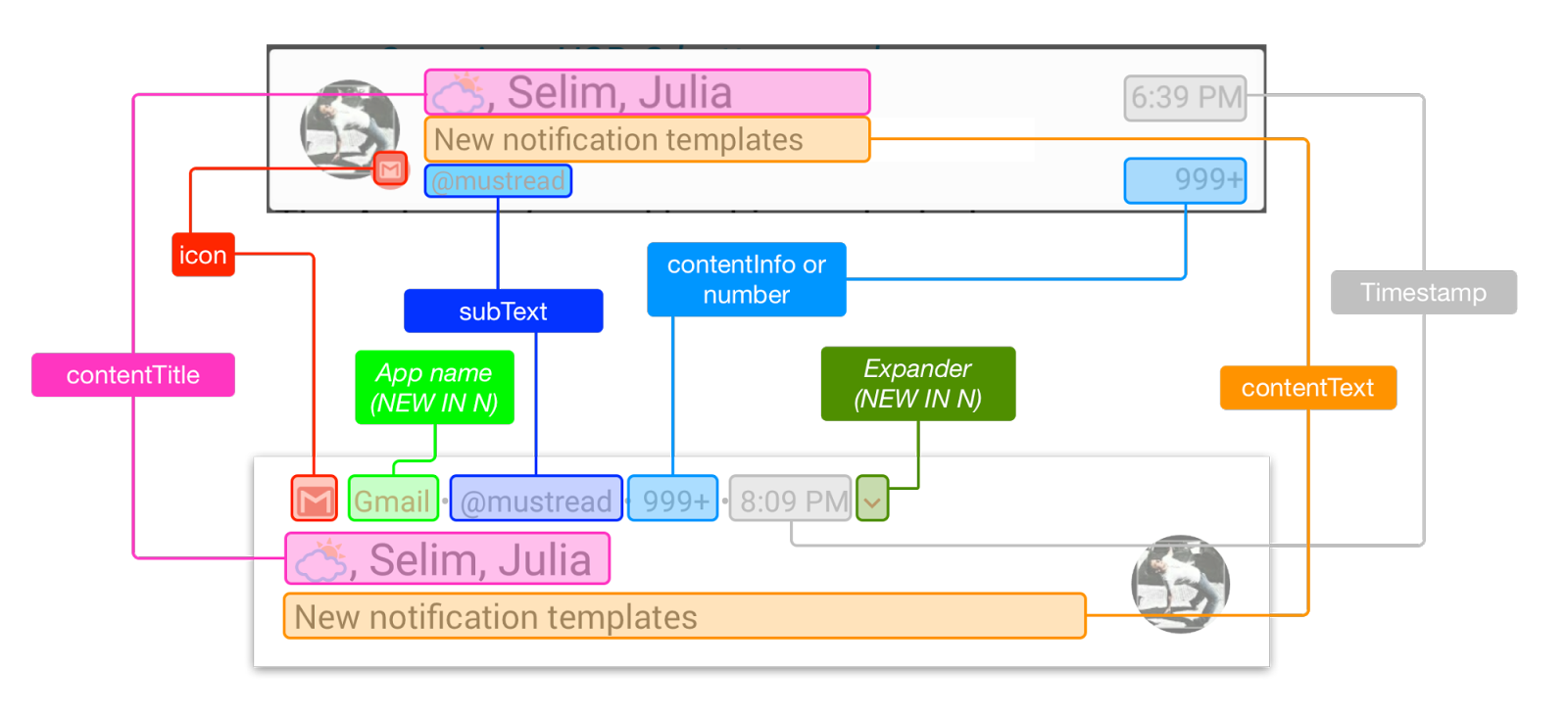
Android N notifications are getting a new look to help provide a better user experience. They now have a fresh look, improved for custom views, and expanded functionality in the forms of Direct Reply.
The default look and feel of notifications has changed, and now the fields around the notifications have been collapsed into a new header row with the app’s icon and name anchoring the notification, according to Android developer advocate Ian Lake on the Android Developers Blog. This makes the title, text and large icon have a lot of space, and now the notifications are slightly larger and easier to read.
Notification actions have also received a redesign and are now in a visually separate bar below the notification, according to the blog. Android has also optimized the experience for displaying an ongoing conversation and using Direct Reply with the new MessagingStyle, which provides built-in formatting for multiple messages added via the addMessage() method.
Bundled notifications also help deliver a better user experience. They are a single summary “notification for when users are looking at other notifications or want to act on all notifications simultaneously and the ability to expand the group to act on individual notifications (including using actions and Direct Reply),” according to the blog.
Notifications on Android have been changing constantly, and with these new tools and changes, the Android team is hoping it will help developers build better apps, according to the blog, which is where developers can find a full list of new notification updates.
Requests for Research by OpenAI
OpenAI is publishing a living collecting of problems to help practitioners and developers understand how to best get started in deep learning.
The new resource section of Open AI is called “Requests for Research,” and there are a series of problems that people can look through, like the difference of value functions, improving Q-learning with continuous actions, and the inverse DRAW model.
Once a problem is solved, the developer can submit a pull request linking to their solution. OpenAI can accept multiple solutions to each problem. Developers can join the developer community on Gitter, where other developers are talking about possible solutions to each problem.
Micro Focus new test automation solution
Micro Focus announced the availability of Silk 17, a set of test automation tools for the cloud, web and mobile platforms.
Silk Mobile lets DevOps teams address challenges like mobile experience, time to market, and the variety of devices that exist. It helps them address these challenges by increasing the speed for testing for mobile, web and rich-client applications, no matter what the skillset is of the testing team, according to the company announcement.
“Organizations want to accelerate their move to digital to deliver more information and services to their customers and users, and to do that, they have to accelerate their ability to deliver mobile applications across different platforms with better performance and improved user experience,” said Renato Quedas, vice president of solution strategy at Micro Focus.
Silk 17 also allows development teams to build automated tests that run on different browsers across platforms and devices. Development teams can also identify the root cause of mobile applications performance problems through end-to-end diagnostics capabilities, and they can build performance and load testing automation on their networks of choice.






